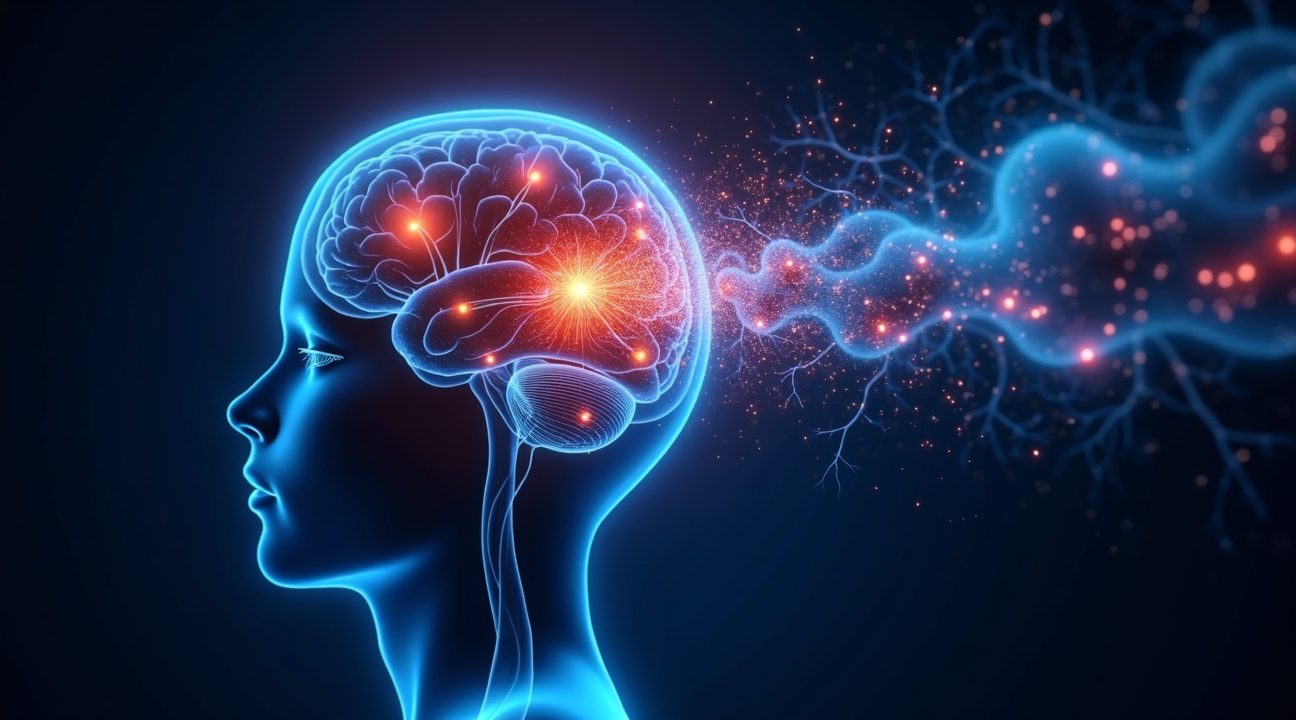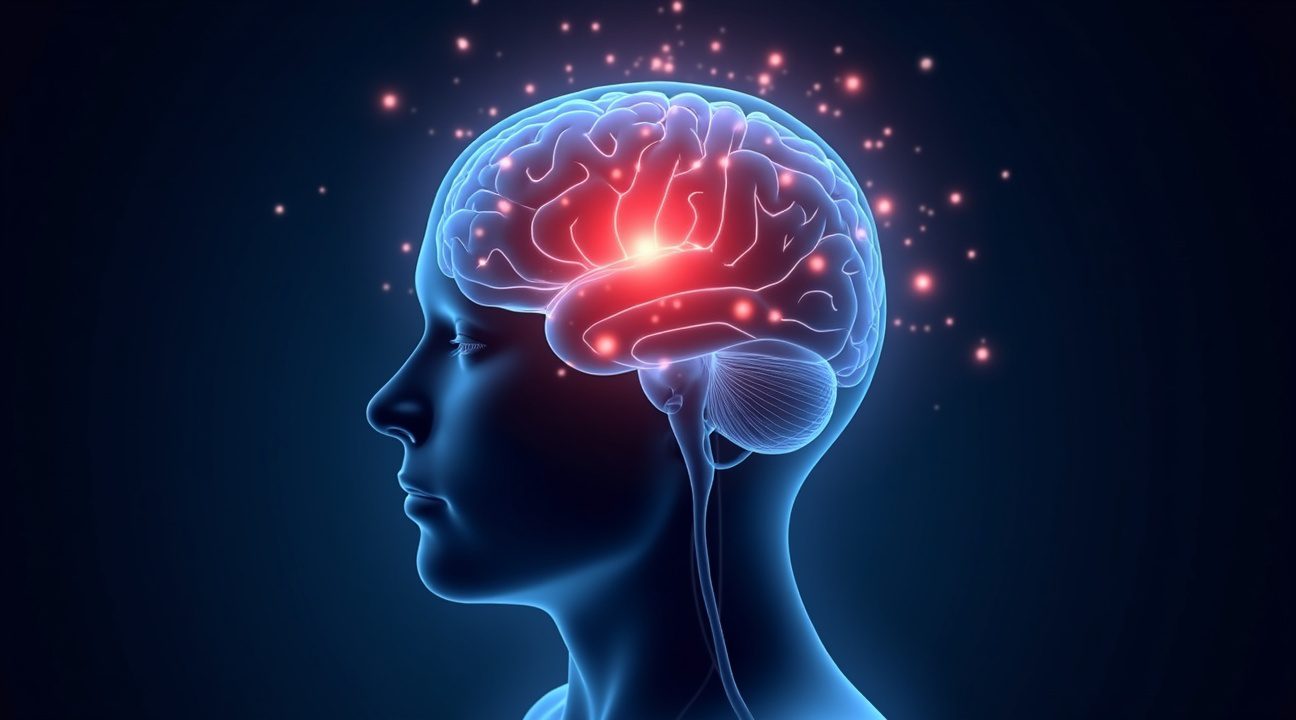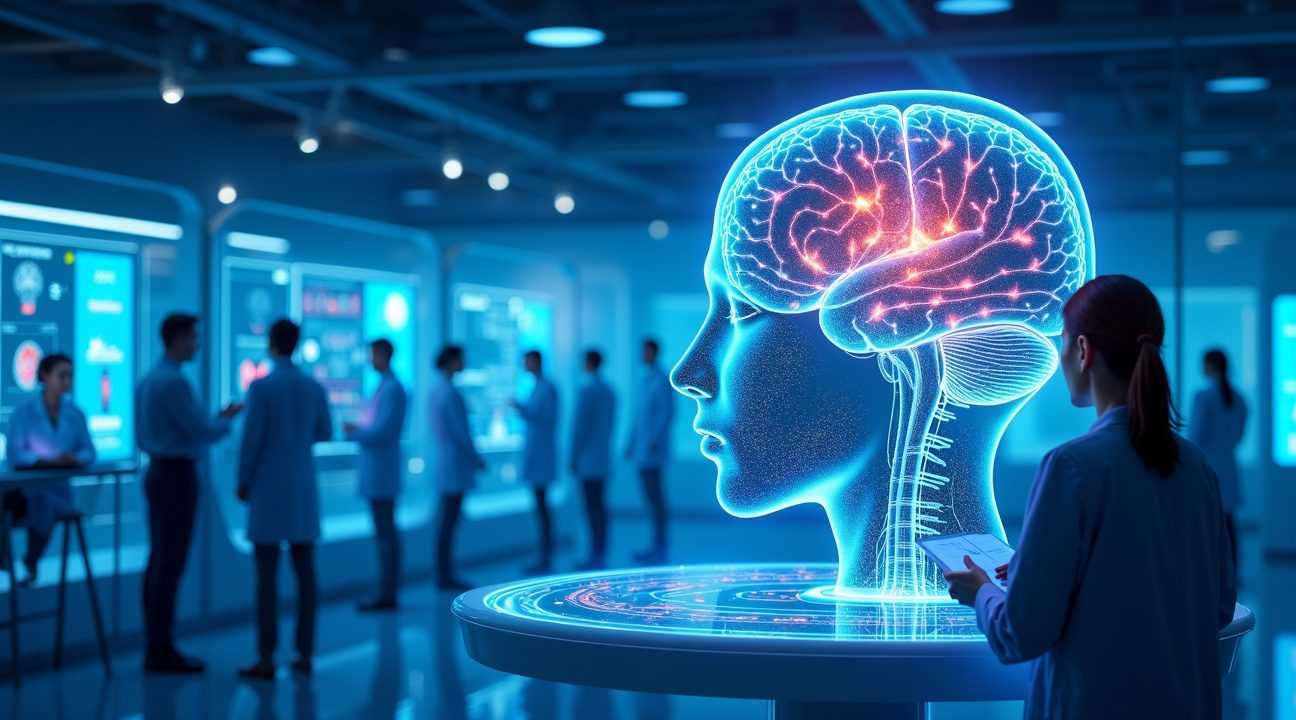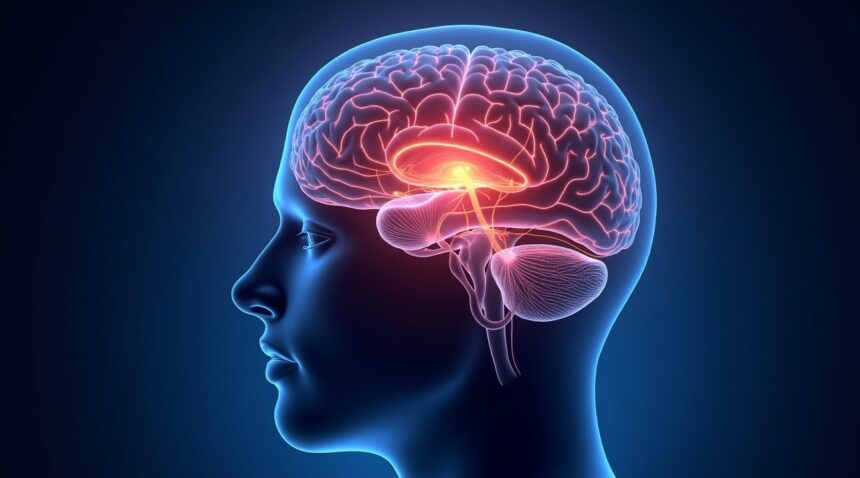Scientists at the Salk Institute have made a significant breakthrough in understanding the neurological underpinnings of chronic pain by identifying a brain circuit within the thalamus responsible for amplifying the emotional intensity of physical pain.
Groundbreaking Discovery in Pain Research
This newly identified brain circuit, involving CGRP (calcitonin gene-related peptide) neurons, creates a direct line of communication to the amygdala—an area of the brain closely linked to emotional processing. The discovery helps explain the excessive emotional suffering experienced in chronic conditions such as fibromyalgia, migraines, and PTSD.
Potential Neurological Causes of Chronic Pain
The research suggests that an overactive CGRP pathway may be at the core of these chronic pain conditions. This overactivity intensifies the emotional weight of pain, distinguishing routine discomfort from debilitating chronic pain. Rather than treating symptoms superficially, this finding opens a door to therapies targeting the actual neurological cause of such exaggerated pain responses.
Key Takeaways
- Brain circuit discovery: Researchers identified specific CGRP neurons in the thalamus that establish a direct pathway to the amygdala, impacting the emotional interpretation of pain.
- Structural brain changes: Conditions like fibromyalgia are linked to detectable changes in brain structure, such as enlarged grey matter in the thalamus and reduced volume in the amygdala and hippocampus.
- Existing migraine drugs show promise: CGRP blockers, already approved for the treatment of migraines, show potential in alleviating other chronic conditions like fibromyalgia and PTSD by halting pain signal amplification.
- Revolutionary non-pharmaceutical treatments: Therapies such as cognitive-behavioral therapy, neurofeedback, brain stimulation techniques, and virtual reality offer promising drug-free ways to modulate pain processing.
- Validation for chronic pain sufferers: This research provides measurable, neurological evidence for disorders historically dismissed as psychological, enabling the rise of personalized, brain-based treatment strategies.
For more information on the research and its implications, you can visit the Salk Institute’s official announcement.
Scientists Discover Brain Circuit That Controls Emotional Response to Pain
Researchers at the Salk Institute have made a groundbreaking discovery about how the brain processes the emotional aspects of pain. Scientists have identified a specific brain circuit located in the thalamus that’s responsible for adding emotional intensity to physical sensations. This finding could revolutionize treatments for chronic pain conditions that have long puzzled medical professionals.
The CGRP Pathway and Its Role in Pain Processing
The newly discovered circuit involves neurons that express calcitonin gene-related peptide (CGRP), creating a direct pathway between the thalamus and the amygdala. This connection is particularly significant because the amygdala serves as the brain’s emotional processing center, where feelings of fear, anxiety, and distress are generated. When these CGRP neurons activate, they essentially amplify the emotional weight of physical pain sensations.
During their experiments, researchers manipulated these neurons in mice to observe behavioral changes:
- Turning off the CGRP neurons dramatically reduced the animals’ emotional responses to painful stimuli.
- Artificially activating them caused heightened distress behaviors.
This demonstrates that the emotional component of pain isn’t simply a byproduct of physical sensation – it’s actively controlled by specific brain circuitry.
Implications for Chronic Pain Conditions
The study suggests that conditions like fibromyalgia, migraines, and PTSD may stem from an overactive CGRP pathway that distorts sensory input interpretation. This discovery explains why patients with these conditions often experience pain that seems disproportionate to any identifiable physical cause. Their brains aren’t malfunctioning – they’re responding to an overstimulated emotional pain circuit.
Neuroinflammation appears to play a crucial role in this process, potentially triggering the overactivity that characterizes chronic pain disorders. Unlike traditional pain medications that focus solely on blocking pain signals, treatments targeting this specific pathway could address the emotional amplification that makes chronic pain so debilitating.
The research opens new possibilities for developing targeted therapies that could help millions of people suffering from conditions where emotional pain processing has gone awry. There is particular promise in approaches that could modulate CGRP activity without completely shutting down normal pain responses, which remain important for survival and injury prevention.
This discovery represents a significant shift in understanding affective pain – the emotional dimension that transforms physical discomfort into genuine suffering. For patients who’ve struggled with inadequate pain management, this research offers hope for more precise and effective treatments that address the root cause rather than just the symptoms. The development of targeted medications based on this circuit could provide relief for conditions that have resisted conventional treatment approaches.

How Fibromyalgia Physically Changes the Brain
Fibromyalgia creates measurable structural changes in the brain that can be observed through advanced imaging techniques. These alterations aren’t imaginary or psychological – they represent real, physical differences that help explain why people with fibromyalgia experience such intense and persistent pain.
The most significant change involves the thalamus, a critical brain region that acts as a relay station for sensory information. People with fibromyalgia show increased grey matter volume (GMV) in the thalamus compared to healthy individuals. This enlargement appears to disrupt normal pain signal processing, contributing to the characteristic hypersensitivity that defines the condition.
Conversely, several other brain regions show reduced grey matter volume in fibromyalgia patients. The cerebellum, traditionally known for balance and coordination, also plays a role in pain modulation and shows decreased volume. The putamen and pallidum, components of the brain’s reward and movement circuits, similarly demonstrate reduced grey matter density.
Perhaps most telling are the changes in emotional processing centers. The amygdala, which processes fear and threat responses, shows decreased volume in fibromyalgia patients. This reduction may explain why normal sensations become interpreted as threatening or painful. The hippocampus, crucial for memory formation and stress regulation, also exhibits reduced grey matter volume, potentially contributing to the cognitive difficulties many fibromyalgia patients experience.
Pain Catastrophizing Amplifies Brain Changes
These structural brain differences connect directly to psychological patterns that intensify pain experiences. Pain catastrophizing—the tendency to magnify pain’s threat value, feel helpless about pain, and ruminate on painful experiences—correlates strongly with the observed brain changes. Patients who engage in higher levels of catastrophic thinking about their pain show more pronounced structural differences in key brain regions.
This relationship creates a concerning cycle where physical brain changes may predispose individuals to catastrophic thinking patterns, which in turn can worsen pain sensitivity and potentially drive further structural changes. The connection between brain structure and thought patterns suggests that effective fibromyalgia treatment must address both physical and cognitive aspects of the condition.
Understanding these brain changes offers hope for more targeted treatments. Rather than dismissing fibromyalgia symptoms as purely psychological, researchers can now point to concrete neurological differences that validate patients’ experiences. Drug development efforts increasingly focus on treatments that can address these specific brain alterations.
The thalamic changes, in particular, present interesting therapeutic targets. Since this region’s enlarged grey matter volume appears central to fibromyalgia’s pain processing problems, interventions that can normalize thalamic function might provide significant relief. Similarly, therapies that can help rebuild grey matter in the reduced-volume regions like the cerebellum and emotional processing centers could address multiple symptoms simultaneously.
These discoveries also explain why fibromyalgia affects people so differently. Individual variations in brain structure and the degree of grey matter changes likely contribute to the wide spectrum of symptom severity seen across patients. Some individuals may have more pronounced thalamic enlargement, leading to severe pain sensitivity, while others might experience greater hippocampal volume loss, resulting in more significant cognitive symptoms.
The research validates what fibromyalgia patients have long known—their pain isn’t “all in their head” in the dismissive sense, but rather reflects real, measurable changes in brain structure. These findings provide a foundation for developing more effective treatments that target the specific neurological mechanisms underlying fibromyalgia’s complex symptom profile.

Existing Migraine Drugs Could Treat Other Chronic Pain Conditions
A breakthrough in understanding pain pathways has revealed that medications already approved for migraine treatment could provide relief for patients suffering from fibromyalgia, PTSD, and other chronic pain conditions. This discovery centers on drugs that block the CGRP (calcitonin gene-related peptide) pathway, which have shown remarkable success in preventing migraines.
CGRP blockers work by intercepting pain signals before they fully develop, but their potential extends far beyond headache relief. Research suggests these medications can modulate emotional and behavioral responses such as fear and avoidance behaviors that are central to affective pain disorders. For patients with fibromyalgia, this means the medication might address not just physical discomfort but also the psychological components that amplify their pain experience.
The identification of the CGRP pathway represents a significant shift in how clinicians approach chronic pain treatment. Unlike traditional pain medications that often focus on blocking pain signals after they’ve formed, CGRP blockers intervene earlier in the process. This early intervention could prove particularly valuable for conditions where emotional trauma and physical pain intertwine, such as PTSD-related chronic pain.
Treatment Options Beyond CGRP Blockers
Patients and healthcare providers now have access to several complementary treatment approaches that can work alongside CGRP blockers:
- Serotonin and norepinephrine reuptake inhibitors (SNRIs) help regulate mood and pain perception simultaneously
- Anticonvulsants can reduce nerve-related pain signals common in fibromyalgia
- Topical treatments provide localized relief without systemic side effects
- Physical therapy and movement-based interventions address muscular components of chronic pain
- Cognitive behavioral therapy helps patients develop coping strategies for managing pain responses
The versatility of CGRP blockers makes them particularly attractive for treating complex pain conditions. Unlike opioids, which carry significant addiction risks, or NSAIDs, which can cause gastrointestinal problems with long-term use, CGRP blockers have demonstrated relatively mild side effect profiles in clinical trials. This safety profile makes them suitable for long-term management of chronic conditions.
Fibromyalgia patients, who often struggle with widespread pain that traditional medications can’t adequately address, may find particular benefit from this approach. The condition’s characteristic combination of physical pain and emotional distress aligns well with CGRP blockers’ ability to address both components simultaneously.
For PTSD patients experiencing chronic pain, the fear and avoidance behaviors that CGRP blockers can help modulate are often key barriers to recovery. When pain triggers traumatic memories or when avoidance of movement leads to physical deconditioning, breaking this cycle becomes crucial for healing. Similar research into repurposing existing medications has shown promise across various medical conditions.
Healthcare providers are increasingly recognizing that chronic pain conditions require multifaceted treatment approaches. CGRP blockers don’t replace existing therapies but rather complement them, offering another tool in the treatment arsenal. The medications can be prescribed alongside other treatments, creating personalized treatment plans that address each patient’s unique combination of symptoms.
The timing of this discovery couldn’t be better, as millions of people worldwide struggle with chronic pain conditions that have limited treatment options. Traditional approaches often provide incomplete relief or come with side effects that limit their long-term use. CGRP blockers offer hope for sustained relief without many of the complications associated with older pain medications.
As research continues, clinicians expect to see expanded FDA approvals for CGRP blockers in treating conditions beyond migraines. The pathway’s role in pain processing appears to be more fundamental than previously understood, suggesting these medications could help with additional chronic pain conditions not yet studied.
This development represents more than just another medication option—it signals a new understanding of how pain, emotion, and behavior interact in chronic conditions. For patients who have exhausted traditional treatment options, CGRP blockers offer renewed hope for managing their symptoms and reclaiming their quality of life.

Revolutionary Treatment Options Beyond Traditional Medications
Medical researchers are exploring groundbreaking non-pharmaceutical interventions that target the brain’s pain processing mechanisms directly. I find these innovative approaches particularly promising because they address the neurobiological foundations of chronic pain conditions without relying on medications.
Cognitive-Behavioral Therapy for Pain Management
Cognitive-behavioral therapy stands at the forefront of revolutionary pain treatment strategies. This therapeutic approach works by identifying and correcting harmful thought patterns that amplify pain perception in conditions like fibromyalgia, PTSD, and migraines. CBT helps patients develop healthier coping mechanisms while teaching the brain to process pain signals differently.
The technique proves especially effective because it directly engages with the emotional regulation centers of the brain. Patients learn to recognize pain-related catastrophic thinking and replace these patterns with more balanced perspectives. This mental restructuring can significantly reduce the intensity of chronic pain episodes and improve overall quality of life.
Neurofeedback and Advanced Brain Training
Neurofeedback represents another cutting-edge approach that’s gaining attention in pain management circles. This technology allows patients to observe their brain activity in real-time and learn to modify it consciously. The process helps strengthen neural pathways associated with pain regulation while weakening those that contribute to chronic pain states.
Several targeted treatment strategies complement these primary interventions:
- Brain stimulation techniques that use magnetic or electrical impulses to reset pain processing centers
- Mindfulness-based stress reduction programs that teach patients to observe pain without emotional reactivity
- Virtual reality therapy that distracts the brain from pain signals while promoting relaxation
- Biofeedback training that helps patients control physiological responses to pain triggers
These revolutionary approaches offer hope for patients who haven’t found relief through conventional treatments. Unlike traditional medications that often come with side effects and dependency risks, these brain-based interventions work with the body’s natural healing mechanisms. Drug research continues advancing in parallel fields, but non-pharmaceutical options provide valuable alternatives.
The success of these treatments lies in their ability to address the root neurological causes of chronic pain rather than simply masking symptoms. Patients often experience lasting improvements that continue even after treatment completion, making these approaches particularly attractive for long-term pain management strategies.

What This Breakthrough Means for Millions of Chronic Pain Sufferers
This groundbreaking brain research represents a pivotal moment for the estimated 50 million Americans living with chronic pain conditions like fibromyalgia, migraines, and PTSD. I find the implications particularly promising because scientists have finally identified specific brain pathways and structural changes that contribute to these complex pain syndromes.
The discovery shifts our understanding from viewing these conditions as mysterious ailments to recognizing them as legitimate neurological disorders with measurable brain alterations. Patients who’ve endured years of skepticism from healthcare providers now have concrete evidence supporting their experiences. This validation alone can transform treatment approaches and reduce the stigma often associated with invisible pain conditions.
Precision Medicine and Targeted Treatment Development
The research opens doors to precision medicine approaches that could revolutionize chronic pain management. Instead of relying on trial-and-error medication protocols, doctors may soon develop personalized treatment plans based on individual brain pathway patterns. This targeted approach promises several advantages:
- Reduced side effects from ineffective medications
- Faster identification of optimal treatment combinations
- Lower healthcare costs through more efficient care delivery
- Improved quality of life through better symptom management
- Enhanced treatment compliance due to increased effectiveness
Neuroinflammation emerges as a central player in these findings, offering new therapeutic targets beyond traditional pain medications. Anti-inflammatory treatments specifically designed for brain tissue could provide relief where conventional approaches have failed. Similar research into existing medications demonstrates how established drugs might find new applications in treating neuroinflammation-related conditions.
The brain structural alterations identified in this research also suggest that certain interventions might prevent chronic pain from developing in the first place. Early detection of these changes could lead to preventive strategies for high-risk individuals, particularly those recovering from trauma or experiencing frequent migraines.
For fibromyalgia patients specifically, this research validates decades of reports about widespread pain sensitivity and cognitive difficulties. The identified brain pathways explain why these individuals experience pain amplification and provide scientific backing for treatments that address central sensitization rather than just peripheral symptoms.
PTSD sufferers stand to benefit from treatments that simultaneously address both psychological trauma and physical pain manifestations. The research suggests these aren’t separate issues but interconnected neurological responses that require integrated treatment approaches.
Migraine patients may see the development of preventive therapies that target specific brain regions before headaches begin. Understanding the structural changes associated with chronic migraines could lead to interventions that modify disease progression rather than just managing symptoms.
The research also supports the development of non-pharmacological treatments. Brain stimulation techniques, specialized physical therapy protocols, and cognitive behavioral interventions could become more precisely targeted based on individual brain pathway profiles.
Future investigations into neuroinflammation’s role promise additional therapeutic breakthroughs. Scientists can now study how different triggers activate inflammatory responses in pain-processing regions, potentially leading to more effective anti-inflammatory strategies tailored to chronic pain conditions.
This discovery fundamentally changes how healthcare providers approach chronic pain management. Treatment protocols will likely evolve to include brain imaging assessments, neuroinflammation markers, and pathway-specific interventions. The shift from symptom management to addressing underlying neurological mechanisms represents a major advancement in chronic pain care.
The timing couldn’t be better for millions of sufferers who’ve exhausted conventional treatment options. These insights provide hope for breakthrough therapies that address root causes rather than masking symptoms. As research continues to build on these findings, patients can anticipate more effective, personalized treatment options that acknowledge the complex neurological nature of their conditions.
This brain research validates what chronic pain sufferers have long known – their conditions are real, measurable, and deserving of serious medical attention. The path forward involves translating these discoveries into practical treatments that restore function and improve lives for those who’ve endured too much suffering for too long.

Sources:
Salk Institute – Scientists Discover Brain Circuit That Controls Emotional Response to Pain
– How Fibromyalgia Physically Changes the Brain
– Existing Migraine Drugs Could Treat Other Chronic Pain Conditions
– Revolutionary Treatment Options Beyond Traditional Medications
– What This Breakthrough Means for Millions of Chronic Pain Sufferers


